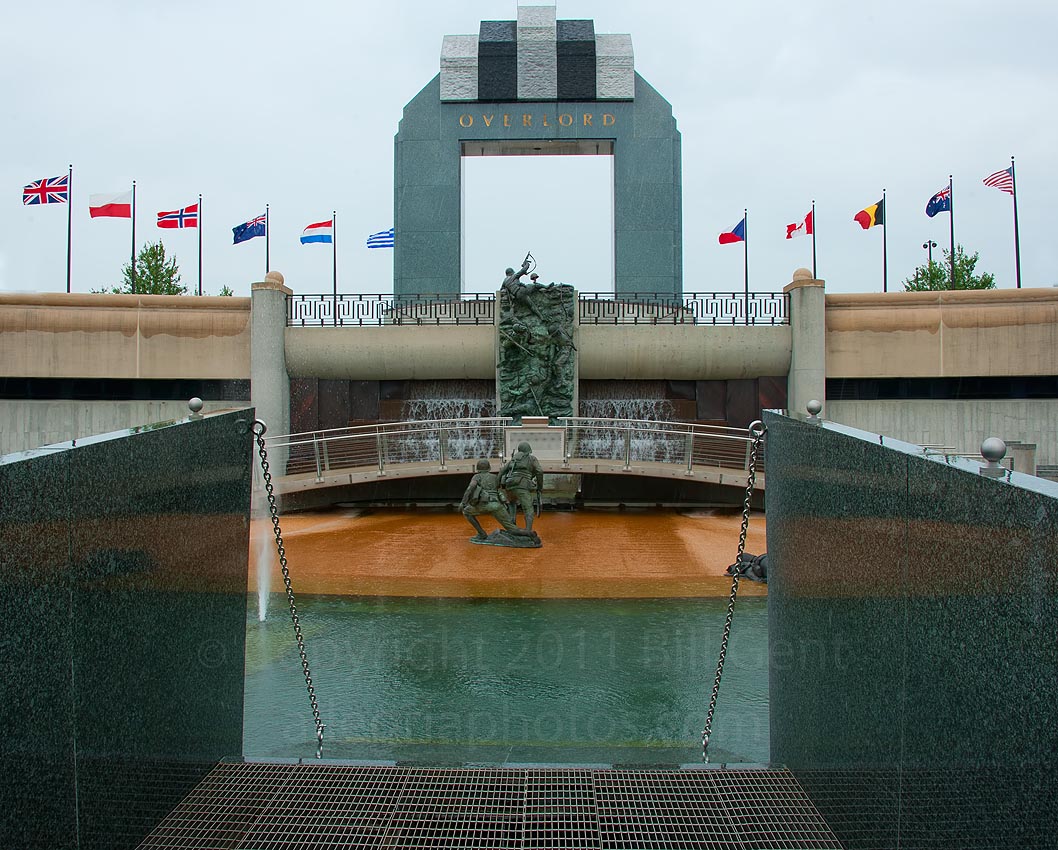The Little Town that Gave its All
On June, 6, 1944, the Allied forces mounted one of the largest operations in military history. Operation Overlord involved a land, sea, and air attack on Normandy, France. The objective of this mission was to break into Nazi occupied Europe. D-Day is remembered in history as one of the pivotal turning points in the European theater of Word War II. Why, then, is the monumental event memorialized in the small town of Bedford, Virginia? Bedford contributed 30 soldiers to the 29th Infantry Division. By the time the sun set on June 6, nineteen of these Bedford boys had made the ultimate sacrifice. Considering the size of Bedford, this sacrifice signified the greatest loss per capita suffered by any town in America. For this reason, the D-Day memorial became part of the landscape of Bedford, nestled in the Blue Ridge mountains.
The memorial is broken into three parts. The first part represents the planning stages of D-Day. This end of the memorial contains the busts of several major leaders involved in the planning stages of D-Day. These busts lead to a small rotunda containing a statue of Dwight Eisenhower, establishing him as leader of the operation. From the rotunda and between the busts the memorial contains a garden in the shape of the Overlord patch. The keys to the success of the planning stages of the operation were timing and deception. Several fake D-Day invasions were planned to confuse the Nazi forces. 

The planning transitions to the actual invasion stage. The memorial achieves this separation of stages by creating different levels. Once the visitor ascends the stairs from the planning stage, he is confronted by a recreation of the scene the soldiers encountered on D-Day. As you approach the water, you cross five sections of blue concrete, representative of the 5 beach landings and the oceans each soldier needed to cross to arrive there. At the edge of the water sits a marble structure reminiscent of the boats used to transport the soldiers to the beaches. This boat has its ramp lowered allowing the often inexperienced soldiers to enter into battle. Several soldiers are depicted in the water and on the beach of the memorial. These soldiers dodge bullets (simulated by water spurts) and some take their final breaths lying on the beach. For the soldiers that survived the beach crossing, the trials had only just begun. The memorial depicts the soldiers clawing their way up the steep cliffs toward the final level, victory.


Once the visitor passes the memorials for the naval and aerial contributions to D-Day, he arrives on the final and highest point of the memorial, the victory stage. The visitor is immediately confronted with a massive arch reminiscent of the the Roman triumphal arches. The arch contains the markings of Allied planes. This arch is also surrounded by the flags of the Allied nations. From this point the visitor can look back upon the entire memorial and appreciate how far thy have come and the struggle that brought them there.

The D-Day Memorial has the unique challenge of memorializing an historic site that most of its visitors will never see. I believe the creators of the memorial have done an excellent job at recreating D-Day. Visitors become involved with the invasion at its its planning stages., cross the beaches to sounds of bullets striking the water, and complete their visit beneath a giant arch and can look out upon the hard fought journey that brought them to this point. While being incredibly impressive for a memorial situated in a fairly small town, the D-Day memorial contains some drawbacks as well. Even though the memorial is open all year, I would not advise visiting in the fall. The fountain simulating the bullet strikes is drained the garden representing the Overlord symbol is dead. These two factors diminish the effect of the memorial. Also the memorial is difficult to understand and fully appreciate without the use of a guide. While the average visitor would get the overall effect of the memorial, aspects of the design would be lost without the assistance of guides. The final drawback to the memorial is the lack of focus on the naval and aerial aspects of the invasion. The memorial dedicates two small enclaves to each that essentially serve as side notes.
Despite these drawbacks, the D-Day memorial is certainly worth the trip. It is a fairly cheap memorial to visit and is located in beautiful country that offers other adventures while in Bedford (Peaks of Otter). I would recommend to visit the memorial in the Spring or Summer and to take advantage of the use of a tour guide.
For more information: http://www.dday.org/
